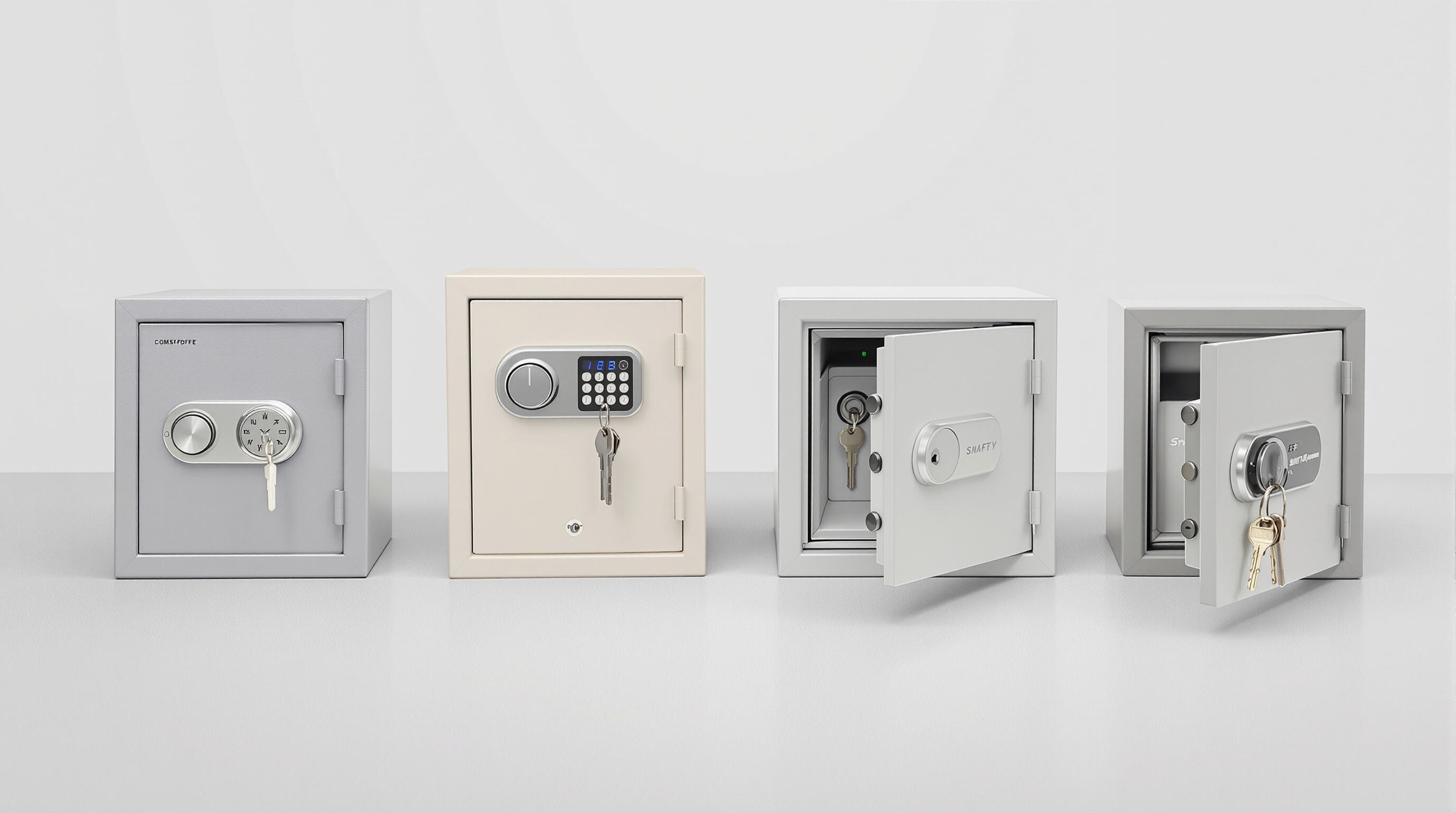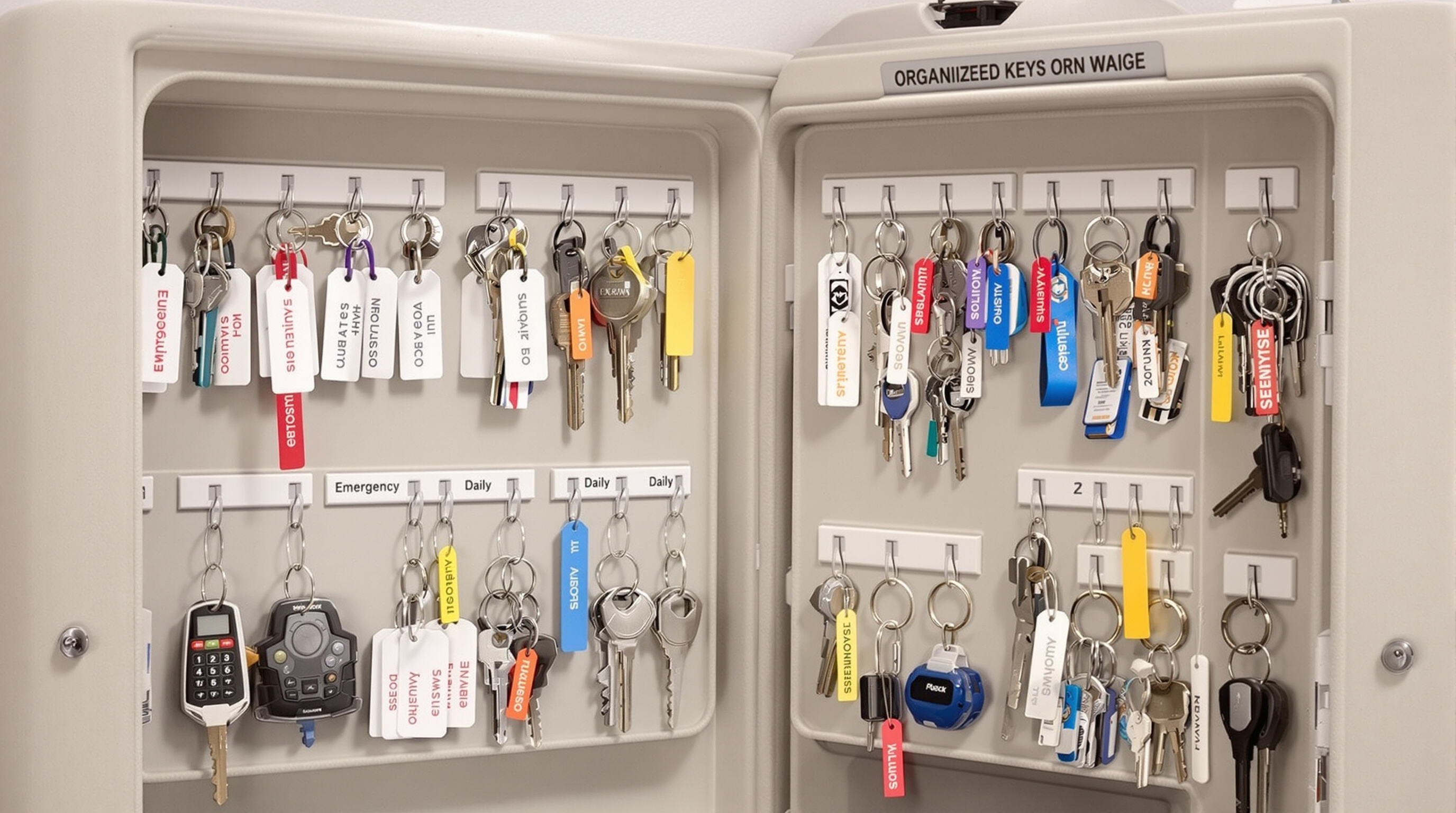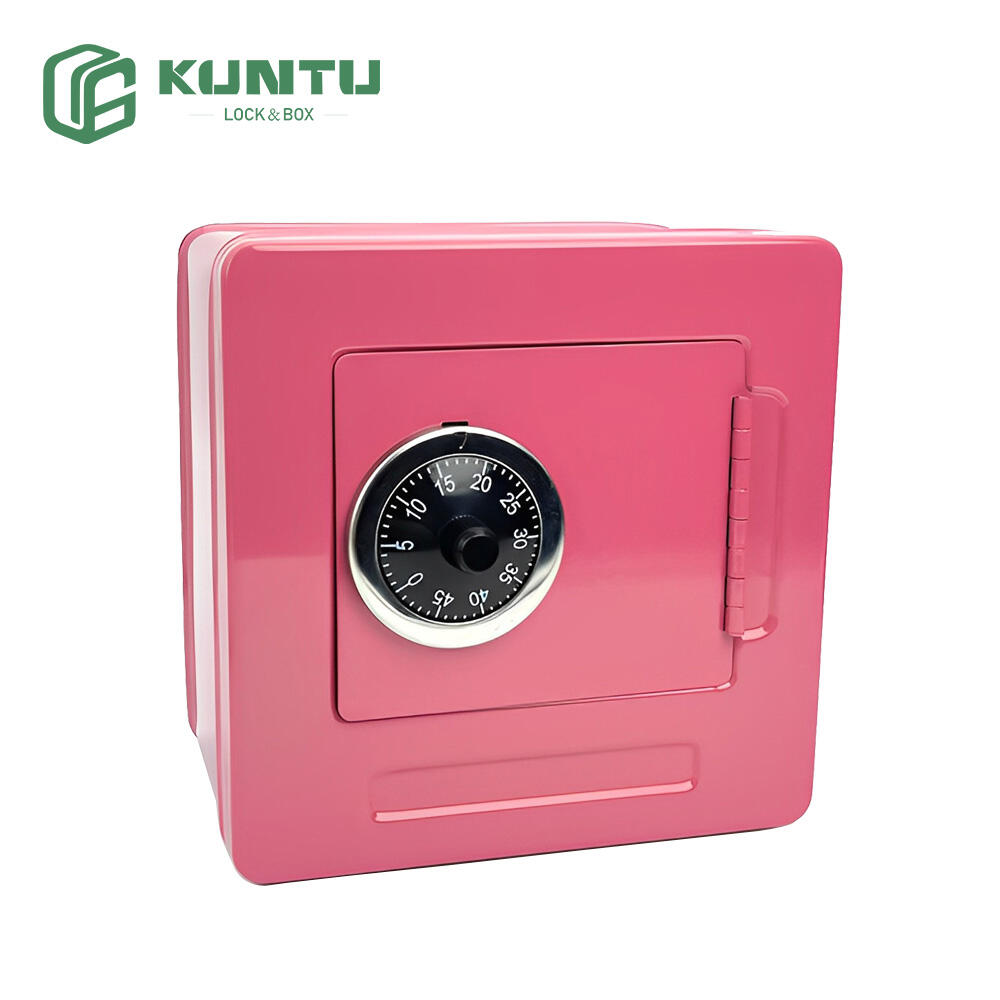Why Key Safe Organization Matters for Security and Efficiency
The Role of a Key Safe in Enhancing Home and Business Security
Key safes solve the problem of exposed keys hanging around where anyone can grab them, but still let authorized people get into what they need. Take home security for instance. The Triple I, which tracks insurance related stuff, found that about one out of every six burglaries last year happened because someone stole keys from mailboxes or those hiding spots under door mats. And businesses aren't immune either. Companies that switch to central key storage systems see their internal theft problems drop by roughly a third when compared to just keeping keys in regular old lockers. That's according to some recent commercial security studies from this year.
Common Risks of Disorganized Keys: Loss, Duplication, and Unauthorized Access
| Risk | Home Impact | Business Impact |
|---|---|---|
| Key Loss | Lockout emergencies | Operational delays ($480/hr avg) |
| Duplication | Unapproved copies by contractors | Intellectual property breaches |
| Unauthorized Use | Stolen packages or vehicle theft | Data center/server room breaches |
How Structured Key Safe Management Reduces Emergencies and Access Delays
Organized key storage cuts emergency response times by 41% for fire departments and maintenance teams, as noted in a 2023 National Fire Protection Association report. Color-coded labels and access logs ensure first responders retrieve correct keys 89% faster during crises, while monthly audits prevent outdated keys from causing system failures.
Types of Key Safes: Choosing the Right System for Your Needs

Mechanical vs. Digital Key Safes: Durability, Access Speed, and Security Trade-offs
Mechanical key safes offer proven durability with analog locking mechanisms, ideal for high-traffic environments. Digital models provide faster access through PIN codes but require battery replacements. A 2023 security analysis found mechanical units last 40% longer in outdoor conditions, while digital systems reduce entry time by 70% during emergencies.
Wall-Mounted Key Safes with Built-In Organization for Multiple Keys
Wall-mounted systems feature tiered hooks and labeled compartments, enabling secure storage of 15–25 keys. Positioned near entry points, these safes minimize unauthorized removal risks while keeping frequently used keys accessible.
Smart Key Safes with App Control, Access Logs, and Remote Sharing
Modern smart key safes enable temporary access sharing via smartphone apps, with 87% of users reporting fewer lockouts. Real-time activity logs help track entries, and tamper alerts notify owners of suspicious attempts within 8 seconds.
Portable Key Safes for Travel, Rentals, and Temporary Access Needs
Compact, weather-resistant designs like combination-lock boxes ensure secure key transfers for Airbnb hosts or contractors. These lightweight units attach to railings or fit in backpacks while maintaining drill-resistant certification standards.
Best Practices for Organizing Keys Inside Your Key Safe

Labeling Keys Clearly to Prevent Confusion During Urgent Situations
According to research from NIST in 2023, when keys are properly marked, emergency access mistakes drop by around 62%. So what's the best way? Get those tags made from something tough that won't wear out easily, and make sure the writing stays legible for years. Something like MAIN GATE - ALARM CODE #3421 works well as an example label. Don't go overboard with abbreviations though. People who aren't familiar with the building might not know what BSMT means, and that can cause problems when time is critical. In places where security matters most, it makes sense to combine physical labels with number codes that match up to digital records. This creates a backup system so everyone knows exactly which key goes where, even if someone new shows up at the scene.
Using Color-Coded Tags or Rings for Fast Visual Identification
Implement a standardized color system:
- Red rings for emergency exits/panic rooms
- Blue tags for maintenance/utility access
-
Yellow labels for seasonal or temporary keys
This approach aligns with fire safety protocols and reduces visual search time by 48% compared to text-only systems.
Prioritizing Access: Emergency, Daily Use, and Seasonal Keys
Organize keys into three tiers within the key safe:
- Top shelf/compartment: Fire department Knox-Box keys and emergency power shutoffs
- Middle section: Daily-use keys for entry points and alarms
- Lower trays: Pool/holiday lighting keys accessed seasonally
Storing Backup Keys and Access Instructions Securely in the Key Safe
Place laminated emergency protocols behind the key rack, detailing:
- Alarm deactivation steps
- Utility shutoff valve locations
- Emergency contact numbers
Use tamper-evident sleeves for backup keys, replacing them biannually or after staff changes. Leading security researchers recommend storing duplicates for 10% of critical access points in a separate, georedundant safe.
Optimal Placement of Your Key Safe for Security and Accessibility
Selecting discreet yet reachable locations for reliable access
When mounting a key safe, go for sturdy surfaces such as brickwork or reinforced concrete instead of flimsy materials that bad guys might target. Hollow walls or thin panels just invite trouble since they're easy to drill through. Find good hiding places where regular folks can reach them but passersby won't notice — maybe tucked behind some bushes, beneath a sheltered entryway, or close to back doors tend to be smart choices. Businesses should think twice before putting these devices anywhere customers might see them. Employee entrances are far better locations for security reasons. According to recent data from Hampshire Police in their 2025 crime report, around two thirds of all incidents involving key safes happened because someone could plainly see the device from walking paths or driveway approaches. Makes sense really — out of sight stays out of mind for most thieves.
Avoiding common placement errors that increase security risks
Don't put those key safes where someone can just reach out from a window or door frame. Criminals can mess with them without being seen that way. Steer clear of obvious spots such as right next to the front door itself or attached to light fixtures since these are exactly what burglars look for when trying to break in with tools. Keep an eye on whether anyone passing by might spot the combination lock or keypad. Sometimes simply turning the whole thing around so it faces away from walkways helps prevent people from peeking over shoulders. If there happens to be a smart home system already installed, adding some motion lights or security cameras about ten to fifteen feet away from wherever the safe sits makes sense too. Most thieves think twice before messing with anything under surveillance.
Maintaining and Updating Your Key Safe System Over Time
A well-maintained key safe system requires scheduled upkeep to address wear patterns, access changes, and emerging security risks. Facilities conducting bi-annual maintenance reduce lockouts by 31% compared to reactive systems, demonstrating the operational value of proactive care.
Conducting Regular Audits of Keys and Access Devices
Regular quarterly audits help check two main things: making sure inventory counts are correct and confirming that access logs match up properly. According to data from the National Locksmith Association released in 2023, nearly half (around 42%) of businesses found illegal copies of their keys when they did these routine inspections. To spot problems, it makes sense to compare the time stamps on digital access systems against old fashioned paper records. This can reveal issues such as contractors keeping keys past their deadline or people getting into buildings late at night without proper permission slips signed off by management.
Updating Combinations or Digital Codes to Limit Unauthorized Access
Properties that update their key safe credentials roughly every three months see about two thirds fewer break-in attempts from unauthorized people. When it comes to places where multiple people need access, such as apartments for rent, setting up those smart key boxes with codes that expire automatically makes sense once tenants move out. With traditional mechanical locks, changing combinations becomes necessary each time someone who had access leaves the company. But here's something interesting: nearly nine out of ten property managers forget about this important security step, based on what various facility management reports have shown over recent years.
Removing Outdated Keys and Access Tools Promptly
Retired keys account for 1 in 3 security breaches involving legacy locking systems. Establish removal triggers:
- Keyrings exceeding 75% capacity (increases misplacement risk)
- Locksmith services modifying cylinder configurations
- Employee/contractor role changes eliminating access needs
Destroy decommissioned metal keys through shredding services rather than disposal, as 22% of dumpster-dived keys still open active locks. For digital systems, purge inactive user profiles and temporary access codes weekly.
FAQs About Key Safe Systems
Why are key safes important for home security?
Key safes minimize the risk of theft by keeping keys securely stored, reducing the chances of keys being stolen from mailboxes or hidden spots such as under door mats.
What types of key safes are available?
Key safes come in various types including mechanical, digital, smart, and portable models, each offering different benefits in terms of durability, access speed, and security.
How should I organize keys in my key safe?
Keys should be labeled clearly and arranged using color-coded tags or rings for easy identification. Organizing them into categories such as emergency, daily use, and seasonal helps prioritize access.
Where should I place my key safe?
Select discreet yet accessible locations, avoiding places that are easily visible to passersby. Mount the key safe on sturdy surfaces like brickwork or reinforced concrete rather than hollow walls.
How often should I conduct audits of my key safe system?
Conduct regular quarterly audits to ensure inventory counts are correct and access logs match up properly, helping detect any unauthorized copies or accesses.
Table of Contents
- Why Key Safe Organization Matters for Security and Efficiency
- Types of Key Safes: Choosing the Right System for Your Needs
- Best Practices for Organizing Keys Inside Your Key Safe
- Optimal Placement of Your Key Safe for Security and Accessibility
- Maintaining and Updating Your Key Safe System Over Time
- FAQs About Key Safe Systems

